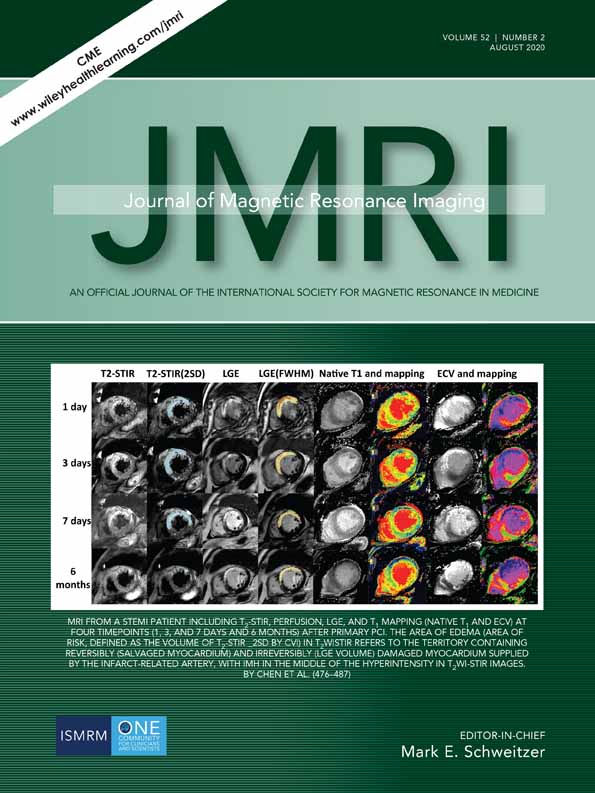Utility of Diffusion-Weighted Imaging for Guiding Clinical Management of Patients With Kidney Transplant: A Prospective Study
Abstract
Background
Although biopsy is essential for the diagnosis and management of kidney transplant recipients, it is invasive. Intravoxel incoherent motion diffusion-weighted imaging (IVIM-DWI) is a noninvasive technique that can assess both capillary perfusion and tissue diffusion.
Purpose
To evaluate the capability of IVIM-DWI as a differentiation of kidney transplant patients who need clinical intervention from those who need not.
Study Type
Prospective.
Subjects
In all, 33 kidney transplant patients who needed clinical intervention and 19 who need not.
Field Strength/Sequence
3.0T; IVIM-DWI with a single-shot echo planar imaging sequence.
Assessment
All patients underwent kidney transplant biopsy and IVIM-DWI scans. Patients were dichotomized into those who needed clinical intervention (CHANGE group) and those who need not (Non-CHANGE group) based on biopsy results. The values of total apparent diffusion coefficient (ADCT), diffusion coefficient (D), and perfusion fraction (f) were acquired from renal cortex and medulla, respectively. The area under the curve (AUC) was calculated and compared.
Statistical Tests
Independent Student's t-test, receiver-operating characteristic curve, and Spearman correlation analysis.
Results
All the cortical and medullary DWI parameters in the CHANGE group were significantly lower than those in the Non-CHANGE group (all P ≤ 0.012). Except for medullary fp, all DWI parameters in both the cortex and the medulla were inversely correlated with both the chronic (ρ ranging from –0.33 to –0.54, all P ≤ 0.02) and acute (ρ ranging from –0.35 to –0.60, all P ≤ 0.01) composite scores. Cortical ADCT and D had the largest AUC and specificity of 0.84 and 75.8%, respectively. Combined use of cortical D and medullary fp at each optimal cutoff point yielded a specificity of 90.9%.
Data Conclusion
DWI demonstrated potential as a noninvasive biomarker to allow the stratification of patients into categories in which kidney allograft biopsy results are or are not likely to change clinical management.
Level of Evidence
1
Technical Efficacy Stage
5 J. Magn. Reson. Imaging 2020;52:565–574.




